GO East
Hallo,
ich habe mich länger nicht gemeldet, bin doch kurzzeitig etwas faulgeworden. Doch heute möchte ich euch einender berühmten Gärten Suzhous direkt vor den Toren der Universität vorstellen in dem ich an einem der letzten Wochenenden mit einer Kommilitonin war.
Der Garten des Meisters der Netz ist einer der kleinsten der vielen Gärten Suzhous, doch er soll auch einer der schönsten sein. Außerdem gehört er zu den Teilen Suzhous die UNESCO Weltkulturerbe sind.
Da ich keine ausführliche deutsche Beschreibung im Internet finden konnte, werdet ihr sie wohl oder übel auf Englisch lesen müssen (Wen die Geschichte nicht interessiert, der kann auch einfach gleich mit den Fotos am Ende weitermachen!):
The Park was built in Chunxi Year of Southern Song Dynasty (1174 A.D.) by Shi Lang (an ancient Chinese official title) Shi Zhengzhi after he retired from the Court.
It is a private Garden with thousands of collected books. So it’s also called the Hall of 10000 Volumes. Flower garden was built opposite the gate, which is called Yu Yin.
During the Qian Long Period of Qing Dynasty (about 1765), a Shao Qing (a title) of Guanglu Temple named Song Zongyuan bought the Garden and make it a villa. The garden was enlarged with 12 scenes of storied building, pavilion, platform and etc., and Song Zongyuan named the Master-Of-Nets Scenery.
Late of Qian Long Period (1795 A.D.m), a merchant prince in Taicang named Qu Yuancun bought the garden and built Plum Blossom Tieshi Hill House, the Small Hill and Osmanthus Fragrans Pavilion, the Washing My Ribbon Pavilion, the Daohe House, the Moon Comes with Breeze Pavilion, the Cloudy Mountain, the Prunus Mume Pavilion, the Meditation Study etc. to make the basic layout of the current garden. The Garden followed the name of “Master-Of-Net”. The Garden was also named “Qu Garden ”as the owner had a family name of Qu.
During the Tong Zhi Period, the Garden was taken over by an An Cha Shi (Chinese Official Title) of Jiangsu named Li Hongyi and Li changed its name into “Su Lin Scenery”. After Li passed away, his heritor Li Shaomei inherited the Garden and added the Beauty within Reach Tower in the 22nd Year of Guang Xu Period (1896 A.D.). In the 33rd Year of Guang Xu Period (1907 A.D.), the Garden was transferred to General Da Gui of that Period.
Later after Xin Hai Revolution, a warlord from Northeast China named Zhang Zuolin purchased the Garden from Da Gui at the expense of silver currency of 300,000 Liang (a Chinese currency unit).
In the 5th Year of the Republic of China, Zhang Zuolin gave the Garden to his teacher Zhang Xiluan as a birthday present, and entitled it a new name “Yi Garden”. The Garden in this period was also called “Zhang’s Garden” and the spots of Full of Beauty Hall, Recalling Ancientry Pavilion, the Peony Study, Moon Sieving Pavilion etc. were all built then. Before the Anti-Japanese War, Zhang Daqian and his brother Zhang Shanzi, two great Chinese Painting masters, resided in the Garden, there’re also some modern inscription calligraphers and painters such as Ye Gongchuo living together. Dafeng Studio, the studio of the Zhang brothers, is just the Peony Study now.
In 1940, a connoisseur and collector named He Yanong bought the Garden and resumed the name of “the Master-Of-Nets Garden”. In 1950, the later generation of He Yanong donated the Garden to the country.
In 1958, Suzhou Garden Management Bureau made overall refitting on ?he Master-Of-Nets Garden, the Cloud Stairway Hall was enlarged and new spots such as Green Jade Spring and Cold Spring Pavilion were built, the Garden was renewed then. In October of 1958, the the Master-Of-Nets Garden was formally opened to the public.
(http://www.beautifulsuzhou.com/2012/02/29/master-nets-garden-suzhou/)
Svenja Hilgert
29 chapters
16 Apr 2020
Garten des Meisters des Netzes
Suzhou, China
Hallo,
ich habe mich länger nicht gemeldet, bin doch kurzzeitig etwas faulgeworden. Doch heute möchte ich euch einender berühmten Gärten Suzhous direkt vor den Toren der Universität vorstellen in dem ich an einem der letzten Wochenenden mit einer Kommilitonin war.
Der Garten des Meisters der Netz ist einer der kleinsten der vielen Gärten Suzhous, doch er soll auch einer der schönsten sein. Außerdem gehört er zu den Teilen Suzhous die UNESCO Weltkulturerbe sind.
Da ich keine ausführliche deutsche Beschreibung im Internet finden konnte, werdet ihr sie wohl oder übel auf Englisch lesen müssen (Wen die Geschichte nicht interessiert, der kann auch einfach gleich mit den Fotos am Ende weitermachen!):
The Park was built in Chunxi Year of Southern Song Dynasty (1174 A.D.) by Shi Lang (an ancient Chinese official title) Shi Zhengzhi after he retired from the Court.
It is a private Garden with thousands of collected books. So it’s also called the Hall of 10000 Volumes. Flower garden was built opposite the gate, which is called Yu Yin.
During the Qian Long Period of Qing Dynasty (about 1765), a Shao Qing (a title) of Guanglu Temple named Song Zongyuan bought the Garden and make it a villa. The garden was enlarged with 12 scenes of storied building, pavilion, platform and etc., and Song Zongyuan named the Master-Of-Nets Scenery.
Late of Qian Long Period (1795 A.D.m), a merchant prince in Taicang named Qu Yuancun bought the garden and built Plum Blossom Tieshi Hill House, the Small Hill and Osmanthus Fragrans Pavilion, the Washing My Ribbon Pavilion, the Daohe House, the Moon Comes with Breeze Pavilion, the Cloudy Mountain, the Prunus Mume Pavilion, the Meditation Study etc. to make the basic layout of the current garden. The Garden followed the name of “Master-Of-Net”. The Garden was also named “Qu Garden ”as the owner had a family name of Qu.
During the Tong Zhi Period, the Garden was taken over by an An Cha Shi (Chinese Official Title) of Jiangsu named Li Hongyi and Li changed its name into “Su Lin Scenery”. After Li passed away, his heritor Li Shaomei inherited the Garden and added the Beauty within Reach Tower in the 22nd Year of Guang Xu Period (1896 A.D.). In the 33rd Year of Guang Xu Period (1907 A.D.), the Garden was transferred to General Da Gui of that Period.
Later after Xin Hai Revolution, a warlord from Northeast China named Zhang Zuolin purchased the Garden from Da Gui at the expense of silver currency of 300,000 Liang (a Chinese currency unit).
In the 5th Year of the Republic of China, Zhang Zuolin gave the Garden to his teacher Zhang Xiluan as a birthday present, and entitled it a new name “Yi Garden”. The Garden in this period was also called “Zhang’s Garden” and the spots of Full of Beauty Hall, Recalling Ancientry Pavilion, the Peony Study, Moon Sieving Pavilion etc. were all built then. Before the Anti-Japanese War, Zhang Daqian and his brother Zhang Shanzi, two great Chinese Painting masters, resided in the Garden, there’re also some modern inscription calligraphers and painters such as Ye Gongchuo living together. Dafeng Studio, the studio of the Zhang brothers, is just the Peony Study now.
In 1940, a connoisseur and collector named He Yanong bought the Garden and resumed the name of “the Master-Of-Nets Garden”. In 1950, the later generation of He Yanong donated the Garden to the country.
In 1958, Suzhou Garden Management Bureau made overall refitting on ?he Master-Of-Nets Garden, the Cloud Stairway Hall was enlarged and new spots such as Green Jade Spring and Cold Spring Pavilion were built, the Garden was renewed then. In October of 1958, the the Master-Of-Nets Garden was formally opened to the public.
(http://www.beautifulsuzhou.com/2012/02/29/master-nets-garden-suzhou/)
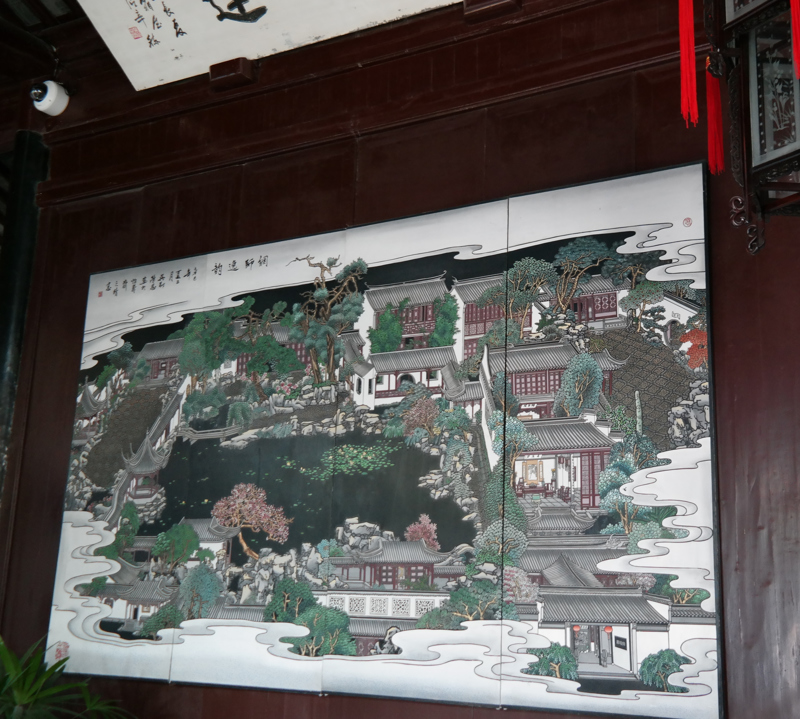
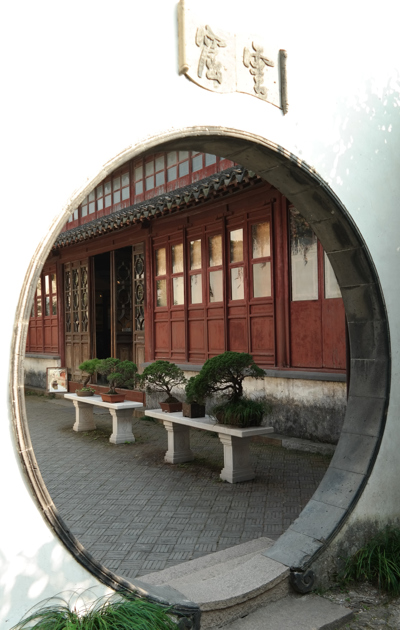
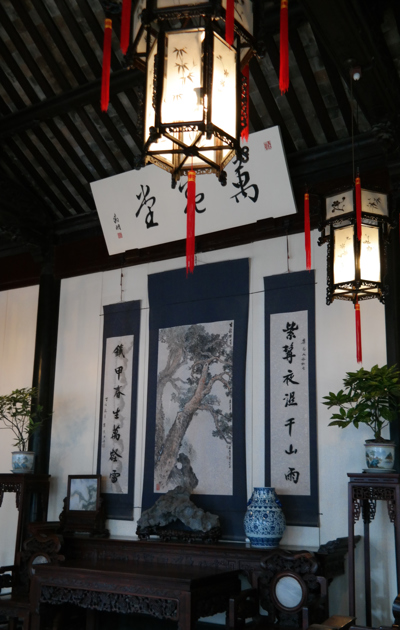

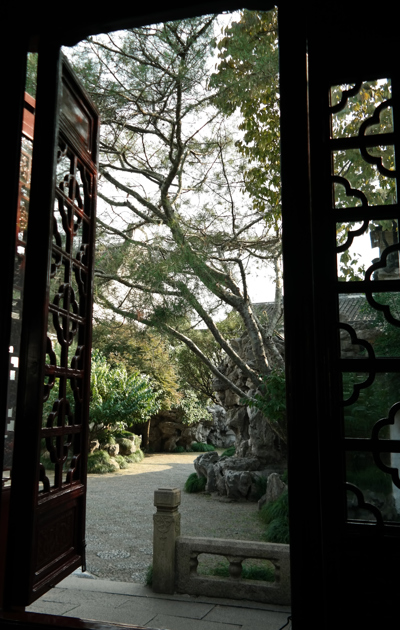
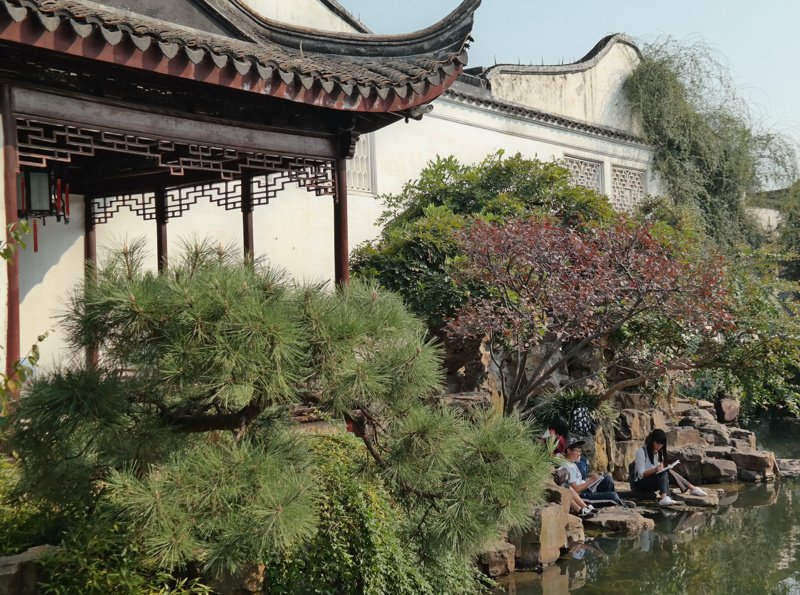
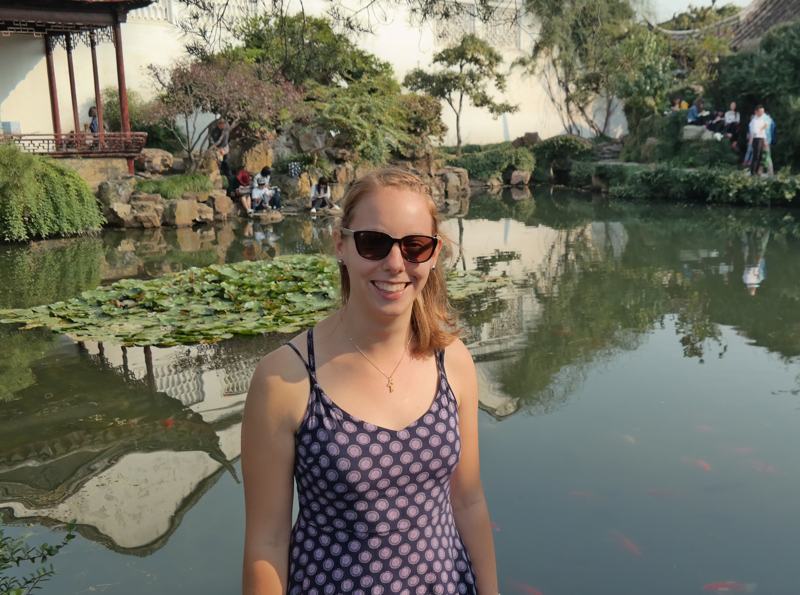
1.
Los geht´s!
2.
10.000km später
3.
Strand, Stadt und Natur
4.
Zeit im zweiten Zu Hause
5.
Willkommen in China
6.
Suzhou
7.
Suzhou Universität
8.
Nanjing
9.
Reise ins Gelbe Gebirge
10.
Garten des Meisters des Netzes
11.
Da war noch was!
12.
Einmal ist immer das erste Mal
13.
Herbstlich schönes Suzhou
14.
36 hours in Nanjing
15.
Lang Lang ist`s her!
16.
Ab in den Süden
17.
Ein Staat, zwei Welten?
18.
Kulturschock 2.0
19.
The Road to a friends house is never too long.
20.
Ein Traum wird wahr :D
21.
In und um Suzhou
22.
Was Svenja sonst so in ihrer Freizeit tut
23.
Erneuter Besuch aus Deutschland und eine Reise zu den Pandabären
24.
Ab in den Süden
25.
Manchmal muss man einfach den richtigen Moment abwarten
26.
Reise niemals an einem Feiertag!
27.
Einmal Hauptstadt und zurück
28.
Ist es gut oder schlecht, alle drei Monate das Land verlassen zu müssen?
29.
It's not a goodbye, It's a see you soon
Share your travel adventures like this!
Create your own travel blog in one step
Share with friends and family to follow your journey
Easy set up, no technical knowledge needed and unlimited storage!